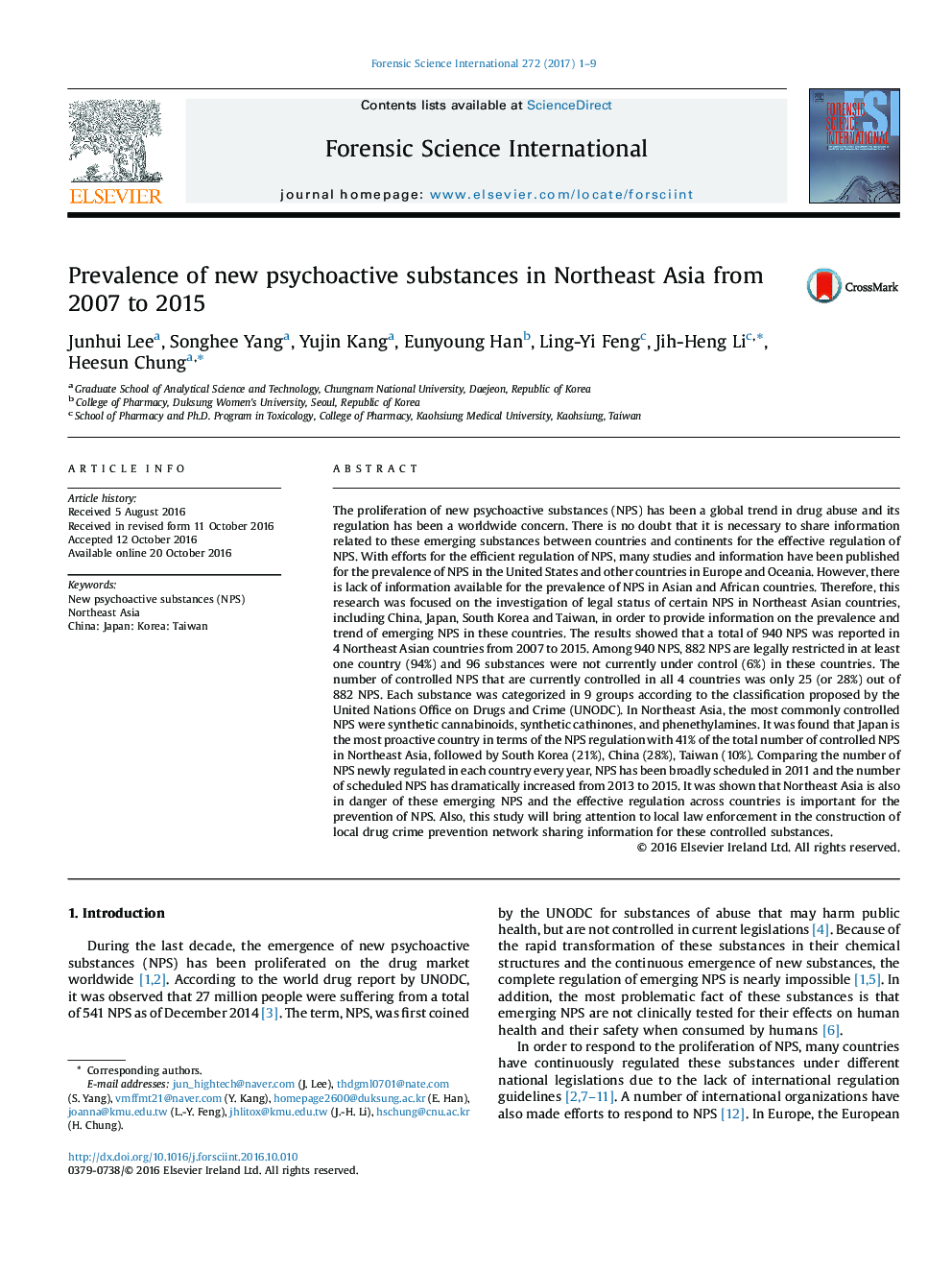| کد مقاله | کد نشریه | سال انتشار | مقاله انگلیسی | نسخه تمام متن |
|---|---|---|---|---|
| 6462422 | 1421978 | 2017 | 9 صفحه PDF | دانلود رایگان |
- The trend and legal status of NPS in China, Japan, Korea and Taiwan was studied.
- Among total of 940 NPS reported, only 25 are currently controlled in 4 countries.
- Japan is the most proactive country regarding the NPS regulation followed by Korea.
- The information on emerging NPS in four countries was conducted for the first time.
The proliferation of new psychoactive substances (NPS) has been a global trend in drug abuse and its regulation has been a worldwide concern. There is no doubt that it is necessary to share information related to these emerging substances between countries and continents for the effective regulation of NPS. With efforts for the efficient regulation of NPS, many studies and information have been published for the prevalence of NPS in the United States and other countries in Europe and Oceania. However, there is lack of information available for the prevalence of NPS in Asian and African countries. Therefore, this research was focused on the investigation of legal status of certain NPS in Northeast Asian countries, including China, Japan, South Korea and Taiwan, in order to provide information on the prevalence and trend of emerging NPS in these countries. The results showed that a total of 940 NPS was reported in 4 Northeast Asian countries from 2007 to 2015. Among 940 NPS, 882 NPS are legally restricted in at least one country (94%) and 96 substances were not currently under control (6%) in these countries. The number of controlled NPS that are currently controlled in all 4 countries was only 25 (or 28%) out of 882 NPS. Each substance was categorized in 9 groups according to the classification proposed by the United Nations Office on Drugs and Crime (UNODC). In Northeast Asia, the most commonly controlled NPS were synthetic cannabinoids, synthetic cathinones, and phenethylamines. It was found that Japan is the most proactive country in terms of the NPS regulation with 41% of the total number of controlled NPS in Northeast Asia, followed by South Korea (21%), China (28%), Taiwan (10%). Comparing the number of NPS newly regulated in each country every year, NPS has been broadly scheduled in 2011 and the number of scheduled NPS has dramatically increased from 2013 to 2015. It was shown that Northeast Asia is also in danger of these emerging NPS and the effective regulation across countries is important for the prevention of NPS. Also, this study will bring attention to local law enforcement in the construction of local drug crime prevention network sharing information for these controlled substances.
Journal: Forensic Science International - Volume 272, March 2017, Pages 1-9
